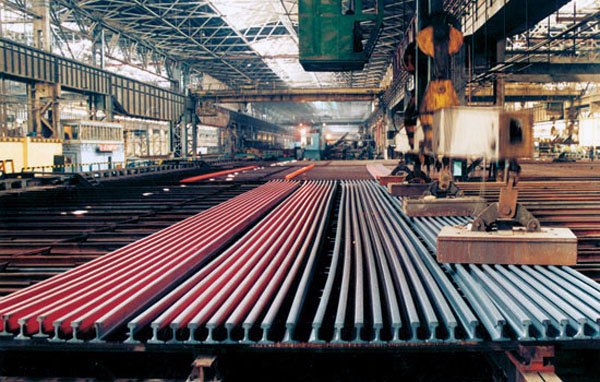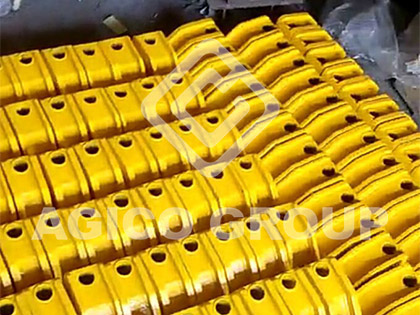The Maintenance Knowledge of Railway Track
Introduction of railway track

Steel Rails, also known as rail profiles, are the important parts of railway tracks. Which together with other components such as rails, fasteners, railroad ties (sleepers,) and ballast, plus the underlying subgrade are included in the whole railway track structure. Use of the steel rail allowed railroads to increase traffic density and run heavier trains at higher speeds without excessive rail wear and risk of fracture. It enables trains to move by providing a dependable surface for their wheels to roll upon.
In the early stage of railway transportation, the rails are mainly made of wood with a thin layer of iron wrapped outside. As railway construction developed continuously, wooden rails were replaced by iron rails and steel rails with superior load-bearing capacity. In conclusion, steel rails played an important role in the progress of mordern railway transportation system.
The types of railway track manufactured by AGCIO

AGICO is one of Chinese leading steel manufacturers, producing a large number of steel rails every year. We supply a variety of high-quality steel rails for some of the most demanding applications around the world. Our rails have been exported to over 50 countries such as America, Brazil, Canada, Germany, Britain and some other countries and regions.
There are three types of railway tracks classified by application, AGICO supplies crane rail, heavy rail and light rail. At the same time, we can manufucture some other foreign standard steel rails for clients, including BS series of British standard, DIN series crane rails of German standard, UIC series of International Railway Union, ASCE series of American standard, and JIS series of Japanese standard.
Maintenance knowledge of

We need to maintain them periodically to ensure the normal operation of train. Then there are some maintenance knowledge of steel rails. It mainly includes the following work: grinding the rails, replacing damaged rails, remove fasteners, tamping and the final check. Now, let us take a close look at it.
Grinding the rails
We should prepare some tools and equipment for replacing sleepers at first: lining machine, impact hammer, track hoe, T-wrench and etc. Grinding was initially used to treat wave-shaped wear and now it has developed into a modern rail maintenance technology with multiple functions. Regular grinding can eliminate wave wear and the fatigue layer on the surface of the rail.
Replacing damaged rails
And then, we ought to examine whether the steel rails are in good condition or not. We will need to repair as well as replacing the damaged rails to ensure the normal operation of railway transportation. And then, Lift the sleepers to the outerside of the railway lines without invading the boundary line, preventing the signs and signal equipment from damaging.Remove ballast
Moreover, remove the slope of track bed and the ballast inside the sleeper box to a depth that can be pulled out and penetrated into the sleeper without damaging the bolts. And then do the work of separating and cleaning the mixed ballast.Remove fasteners
Meanwhile, remove the nuts, flat washers, springs, rail gauge block, nylon seat, large rubber pad, and store them in a suitable place. Then pull out the old sleepers by rail clamps or ropes along the track bed slot, and place it on the shoulder.Install new sleepers
In addition, we worked in teams of four, and lift new sleepers by lifting jacks to install the new sleepers. Align the position of the sleeper, and place the large rubber pad, then install the nylon seat, gauge baffle, spring strip, and tighten the fasteners.
Tamping and final check
Finally, arrange a recompaction within 2-5 days to tighten the sleeper bolts according to the train density. We would better do a final check before leaving the site, first conduct a comprehensive inspection, and repair any defects, then backfill the track bed, and clean up the remains of the old sleepers.
Get In touch Now!
We receive enquiries in English, Español (Spanish), Русский язык (Russian), Français (French) and العربية (Arabic). Our professional team will reply to you within one business day. Please feel free to contact us!




